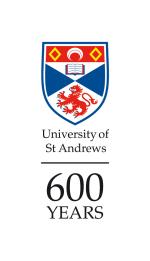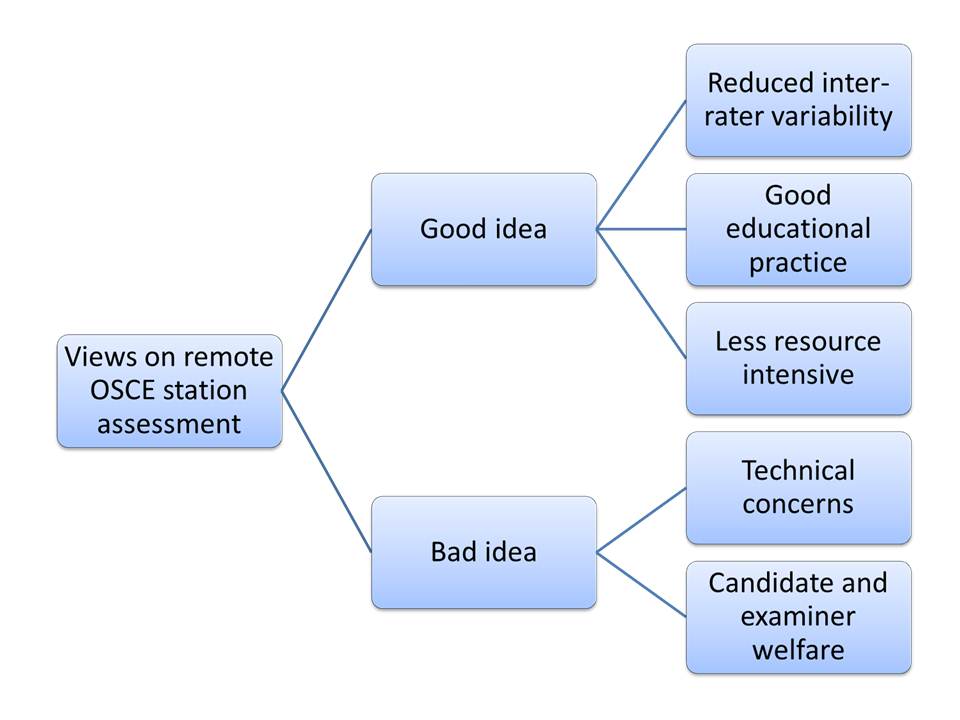


Theme
OSCE and Standard Setting
Category
OSCE
INSTITUTION
School of Medicine, University of St Andrews, St Andrews, UK.

Our results indicate that the stakeholders involved are aware of the benefits of using video-capture in assessment. Support for this has also been seen in a recent study where nurse practitioner students welcomed video-recorded OSCE in formative assessment (Barratt 2010).
The innovative use of video-capture may provide a solution to some of the limitations of the traditional OSCE format. The video-capture of a candidate's OSCE performance allows for an assessor to remotely score the candidate. This method has yet to be explored in full however, the use of videotaped OSCE (VOSCE) has been reported in shoulder and knee examination.
VOSCE is an acceptable format for students and assessors.
Concerns are focussed on technical aspects - these can be overcome with further work.
Research on reproducibility will further strengthen the implementation of VOSCE.
In a VOSCE assessment the candidate has their performance captured on video, allowing for an assessor to remotely score the candidate. This method has yet to be explored in full however, it does offer benefits for both students and faculty. In this study we examined the acceptability of VOSCE. A semi-structured questionnaire with thematic analysis was used to sample medical students and faculty assessors. Stakeholder agreement is essential in the evolution of clinical skills assessment. We plan to proceed by examining the reproducibility of the VOSCE format through a study of inter-rater reliability in summative assessment.
The authors acknowledge the work of Ian Gordon in the development of media assets for teaching at the School of Medicine, University of St Andrews.
Barratt J. A focus group study of the use of video-recorded simulated objective structuredclinical examinations in nurse practitioner education. Nurse Education in Practice 2010;10: 170-175.
Harden RM, Stevenson M, Downie, WW and Wilson GM. Assessment of clinical competence using objective structured examination. British Medical Journal 1975; 1: 447-451.
Hodges B. Validity and the OSCE. Medical Teacher 2003; 25(3): 250-254.
Vivekananda-Schmidt P et al. Exploring the use of Videotaped Objective Structured Clinical Examination in the Assessment of Joint Examination Skills of Medical Student. Arthritis and Rheumatism 2007; 57(5): 869-876.

 Send Email
Send Email